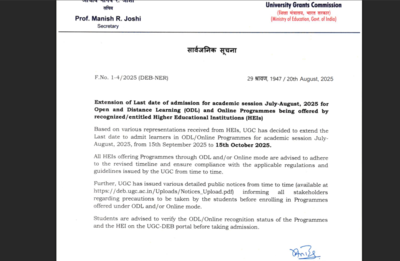
The “One, Big, Beautiful Bill” signed into law by US President Donald Trump on July 4 has introduced a significant new national education policy. The law includes a federally funded private school choice provision, making it the first of its kind to be implemented at the federal level in the United States.As reported by K12Dive, the provision forms part of a larger tax and spending package and has been framed by supporters as a major advancement in parental choice for K–12 education. It offers families access to financial resources for a wide range of education-related expenses. However, the structure and implementation of the programme carry key details that stakeholders will need to understand ahead of its rollout.A nationwide school choice programme backed by federal fundsThe law establishes the first nationwide, federally funded private school choice initiative in the US. Unlike previous programmes limited to state or local levels, this measure allows eligible families across the country to access scholarships for private and home education. According to K12Dive, it covers both secular and religious schools, as well as public school expenses such as tutoring and transport.Parents may use the funds for tuition, educational therapies, technology, and even homeschooling costs. However, participation depends on whether individual states choose to opt in to the federal programme, and as K12Dive noted, it is not yet clear which agencies or leaders will make that determination.Eligibility linked to local income levelsFamilies whose household income does not exceed 300% of the median gross income for their locality will qualify for the programme. For example, as reported by K12Dive, students in Memphis in families earning up to $364,400 would be eligible, based on a local median income of $91,100.The law entrusts scholarship-granting organisations, which must be independent and unaffiliated with any school, to assess eligibility and distribute scholarships. Parents cannot directly use tax credits to fund their child’s education expenses.A tax credit model with significant fiscal implicationsThe school choice programme is structured around a unique federal tax incentive. Taxpayers who contribute up to $1,700 annually to a qualified scholarship-granting organisation will receive a 100% federal income tax credit. As highlighted by K12Dive, this dollar-for-dollar tax benefit is unlike any other charitable giving structure currently available under federal law.The Institute on Taxation and Economic Policy (ITEP), cited by K12Dive, estimated that if 43% of taxpayers—approximately 59 million people—participate, the cost to the federal government could reach $101 billion per year. The law does not impose a cap on total programme expenditure, despite earlier legislative proposals limiting it to $4 billion or $5 billion annually.Programme implementation set for 2027The law specifies that the tax credit will begin for taxable years ending after December 31, 2026. This means the full rollout is expected in 2027. Between now and then, the US Department of Education must establish regulations for the programme’s operation, including reporting, enforcement, and state certification of scholarship-granting organisations.As per K12Dive, no implementation timeline has yet been released by the Department. Key questions remain regarding how this programme will integrate with the existing 35 state-level private school choice schemes serving around 1.3 million students, as noted by EdChoice.Mixed reactions and ongoing preparationsWhile some groups have welcomed the bill, others have expressed concern. Anthony J. de Nicola, chairman of the Invest in Education Coalition, stated that the law represents “a huge victory for American families,” as quoted by K12Dive. On the other hand, EdTrust, an education equity group, criticised the measure as an “extremely costly federal voucher programme” with limited oversight, and referred to the legislation as the “Great American Heist,” according to K12Dive.The law’s long-term impact will depend on decisions made at the state level and on federal regulations yet to be finalised. As K12Dive reported, both school choice advocates and public school supporters are expected to remain active in shaping the future of this landmark programme.TOI Education is on WhatsApp now. Follow us here.






